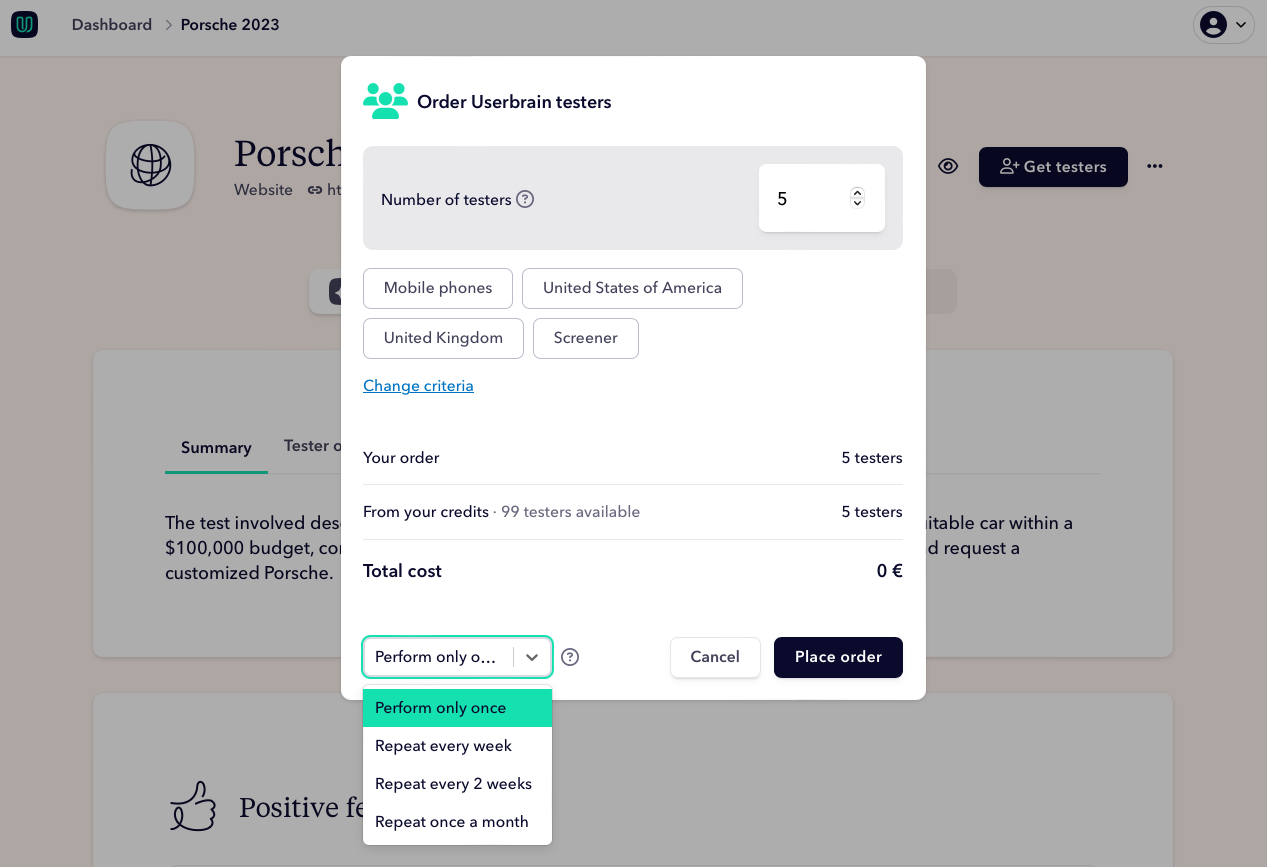Turn User Testing Into a Habit, Not a Hassle: The Proactive Approach
Published November 17, 2014 by Stefan Rössler in
Updated on August 22, 2024

For many, user testing only happens once the product is out there, already facing issues. This reactive, problem-fixing mindset is the norm. Sure, it’s crucial to fix problems. But why wait until the cracks show?
Imagine your product as a garden.🪴
Reactive user testing is like rushing out to prune branches after the damage is done.
But what if you could prevent those issues before they ever sprout? 🌱
That’s where proactive usability testing comes in—it’s like regularly tending to your garden, ensuring your plants thrive before they start wilting.
Start testing in minutes and get results within hours. Tap into our pool of 145k+ testers and watch videos of users interacting with your product on their devices. Discover what’s working for your product, and what’s not!
Start your free trialWhat is proactive user testing?
Proactive user testing isn’t just about putting out fires; it’s about preventing them in the first place.
Think of it as a habit, not a task.
You’re constantly testing and refining as you build, whether you’re a developer, designer, or founder. You’re actively seeking out feedback, not waiting for something to break.
This shift in mindset turns testing into a creative engine, driving innovation while keeping you ahead of the curve.
It’s like having a running dialogue with your users—learning and adapting as you go, instead of waiting for problems to surface.
Why is proactive usability testing important?
We’ve seen reactive testing work, but it often comes at a cost: wasted time, effort, and money. Worse, it can leave you in a constant cycle of chasing fixes instead of pushing the envelope.
At Userbrain, we’re dedicated to helping you take control. That’s why we’ve introduced Automated Testing, a feature designed to help you effortlessly integrate proactive testing into your workflow. Set it up once, and it will repeat every week, two weeks, or month—giving you continuous feedback without the hassle. All you need to do is monitor the results and make updates when needed.
With Automated Testing, you stop scrambling for quick fixes and start shaping something that’s genuinely built for users. You’re not just catching errors—you’re fueling your creative process with ongoing user insights.
How does Automated User Testing work?
It’s simple. Once you’ve set up your test, you can automate it to run regularly, without needing to lift a finger each time.

Pick your target demographics, choose the number of testers, and decide how often you want the test to repeat. Your tests will continue as long as you have enough credits, or until you decide to pause them. It’s proactive usability testing made easy.
Here’s the deal: proactive testing isn’t just a tool; it’s a mindset.
When you integrate usability testing into your workflow, you’re not just catching errors—you’re actively building a better product with every round of feedback.
Be the designer who strikes at the root
Instead of frantically hacking at usability problems after launch, take a moment to strike at the root of those issues. Proactive usability testing helps you catch hidden UX problems early, shaping a smoother, more intuitive product from the start.
Are you ready to lead with foresight, not hindsight?
Back to homepage